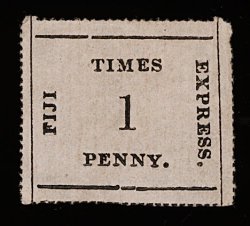

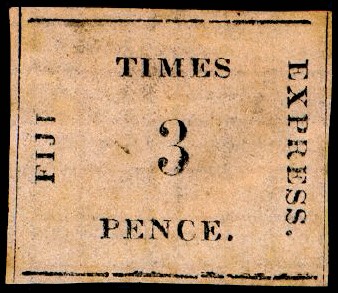
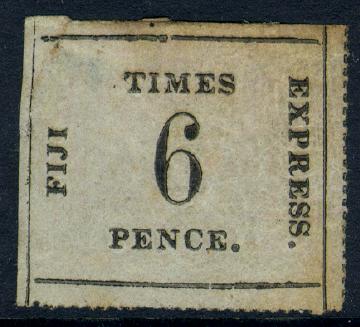

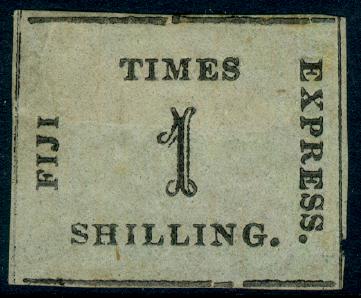
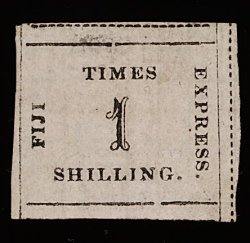
Return To Catalogue - Fiji 1871-1890
Note: on my website many of the
pictures can not be seen! They are of course present in the cd's;
contact me if you want to purchase them: evert@klaseboer.com.
1 p black on lilac 3 p black on lilac 6 p black on lilac 9 p black on lilac 1 Sh black on lilac
Specialists disinghuish between the first printing on Quadrillé Paper and the second printing on Bâtonné Paper:
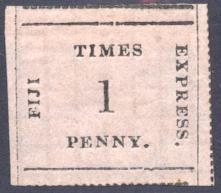
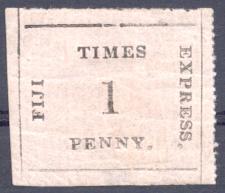
1 p stamps: Quadrillé Paper on the left and Bâtonné Paper on
the right
Value of the stamps |
|||
vc = very common c = common * = not so common ** = uncommon |
*** = very uncommon R = rare RR = very rare RRR = extremely rare |
||
| Value | Unused | Used | Remarks |
| 1 p | R | R | |
| 3 p | R | R | |
| 6 p | RR | RR | |
| 9 p | RR | RR | |
| 1 Sh | RR | RR | |
Literature: http://www.columbianstamp.com/wp-content/uploads/2013/03/FijiTimes.pdf.
These stamps were first printed in 1870 in four rows of 6 stamps,
with six 6 p stamps on top, followed by six 1 Sh stamps in the
second row, six 1 p stamps in the third row and six 3 p stamps in
the last row.
In 1871, the last three 3 p stamps were replaced by three 9 p
stamps, such that the last row of the sheet of 24 stamps now
first has three 3 p stamps followed by three 9 p stamps. The
other stamps in the sheet were the same as the 1870 print.
Sheet reconstruction with all types:
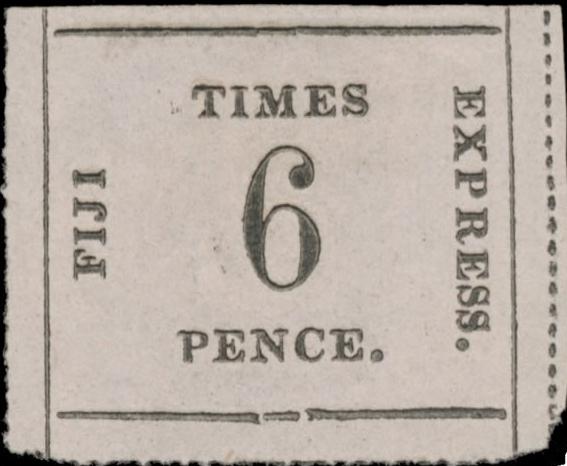 |
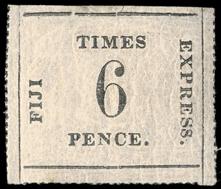 |
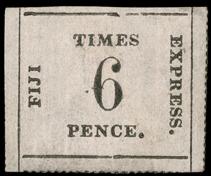 |
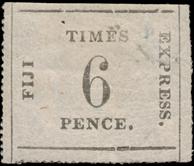 |
||
 |
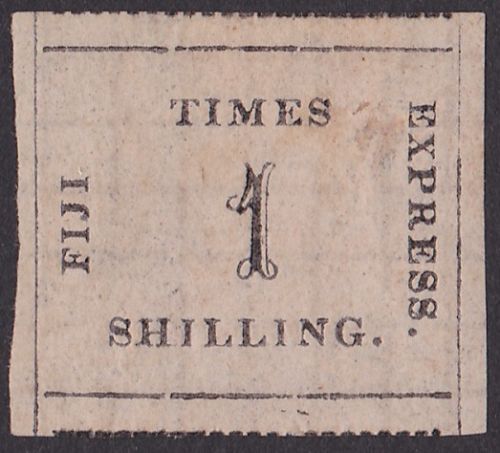 |
 |
|||
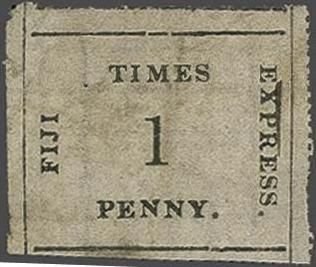 |
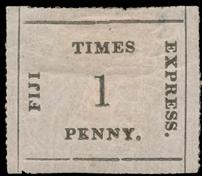 |
 |
 |
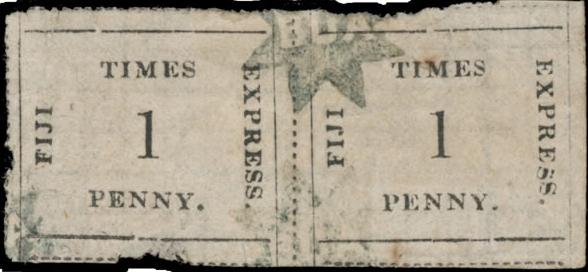 |
|
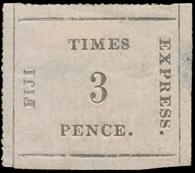 |
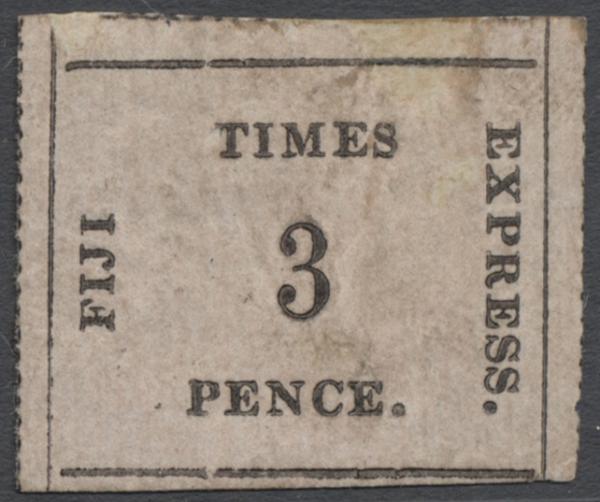 |
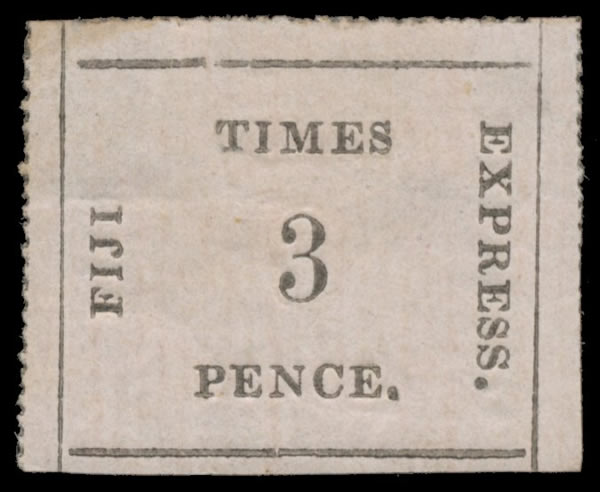 |
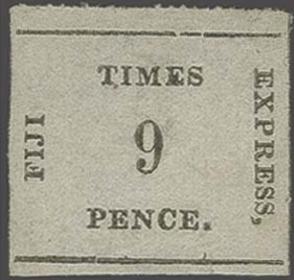 |
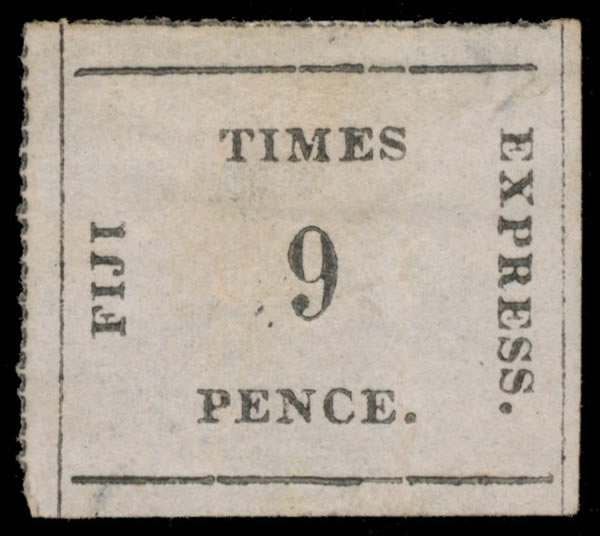 |
|

Position 23 (before it was replaced by a 9 p stamp).
Cancels:


Two stamps with pencancels, reduced sizes
Forgeries, example:
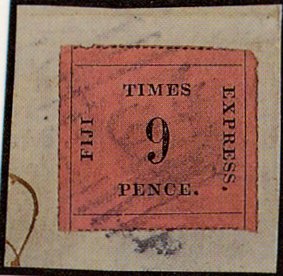
Although I was told that this stamp to be genuine, I have my
doubts, the '9' appears too large?
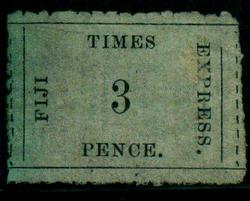
The horizontal lines should be thicker than the vertical ones for all values, in the above shown stamp, the lines are of equal size. According to Album Weeds, if we draw a horizontal line just above 'PENCE' the line should almost go through the center of the last 'S' of 'EXPRESS'. In the forgeries it will pass below the last 'S'. In the 1 p the '1' should be 4 mm high. In the 3 p the '3' is a plain one as shown above, and not a fancy one. The '6' in the 6 p is large (almost 7 mm high), and it is also a plain '6' (below an example of a fancy '6'). The 1 in 1 sh is a fancy '1' with shadelines.


Two strips of forgeries, the left ones made in 1876 and I believe
the right one is the 1888 imitation, reduced sizes
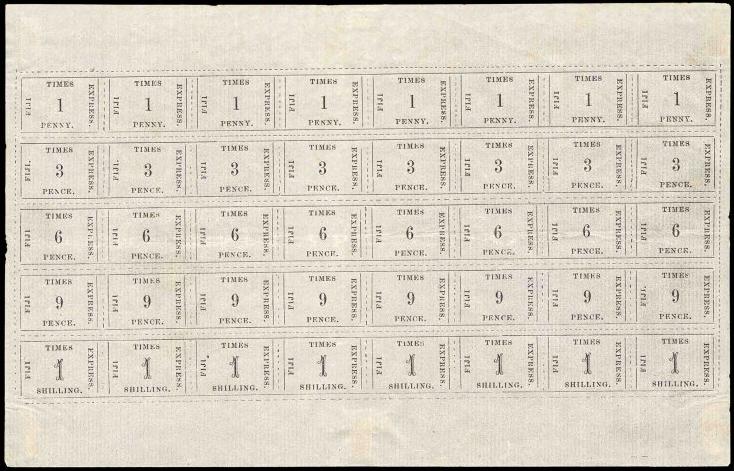
1876 reprints in sheets of 40 stamps. The stamps are also smaller
than the originals.
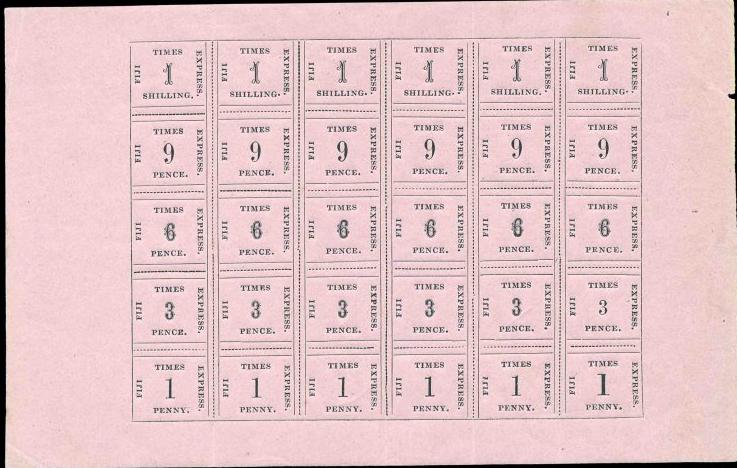
1888 reprint, full sheet. Note that even here there are different
types. For example note the position of the dot behind 'SHILLING'
in the 1 Sh stamp, the shape of the '3' and the larger '1' in the
last 1 penny stamp. The color is too pink as well.
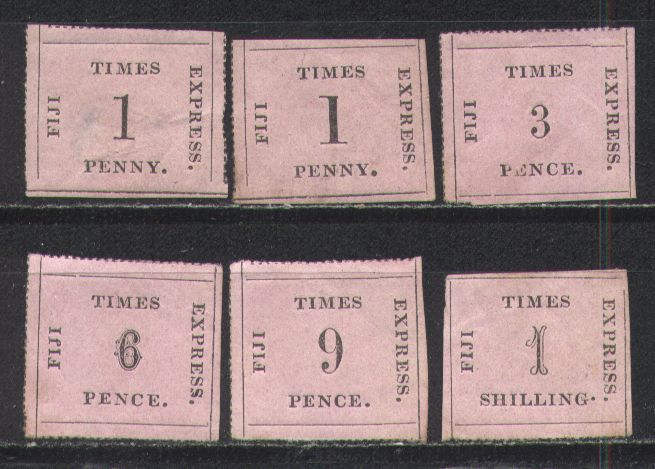
1888 Reprints: The value of the 6 p should be plain. In the above
set of forgeries, it has ornaments.
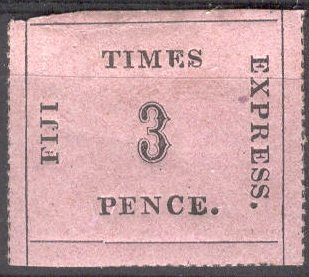
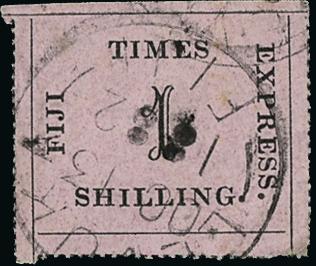
1888 Reprint: The genuine 3 p does not have fancy shadelines
around the '3'. Also a reprint of the 1 Sh with cancel.

1876 reprints
Other forgeries, note the sizes and styles of the values:
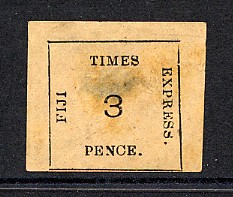
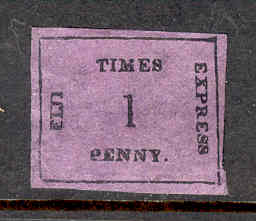
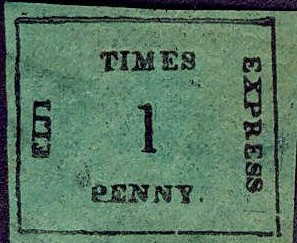
Note the badly shaped letters in the above forgeries of the 1 p
value, especially the 'P' of 'PENNY', which resembles more an
'e'.
More information on the forgeries of these stamps can be found on: http://www.pisc.org.uk/fijiforgeries.html. The Fiji Times made some 'reprint - imitations' and about 8 other forgeries are known (according to this website).
Stamps - Timbres-Poste - Briefmarken